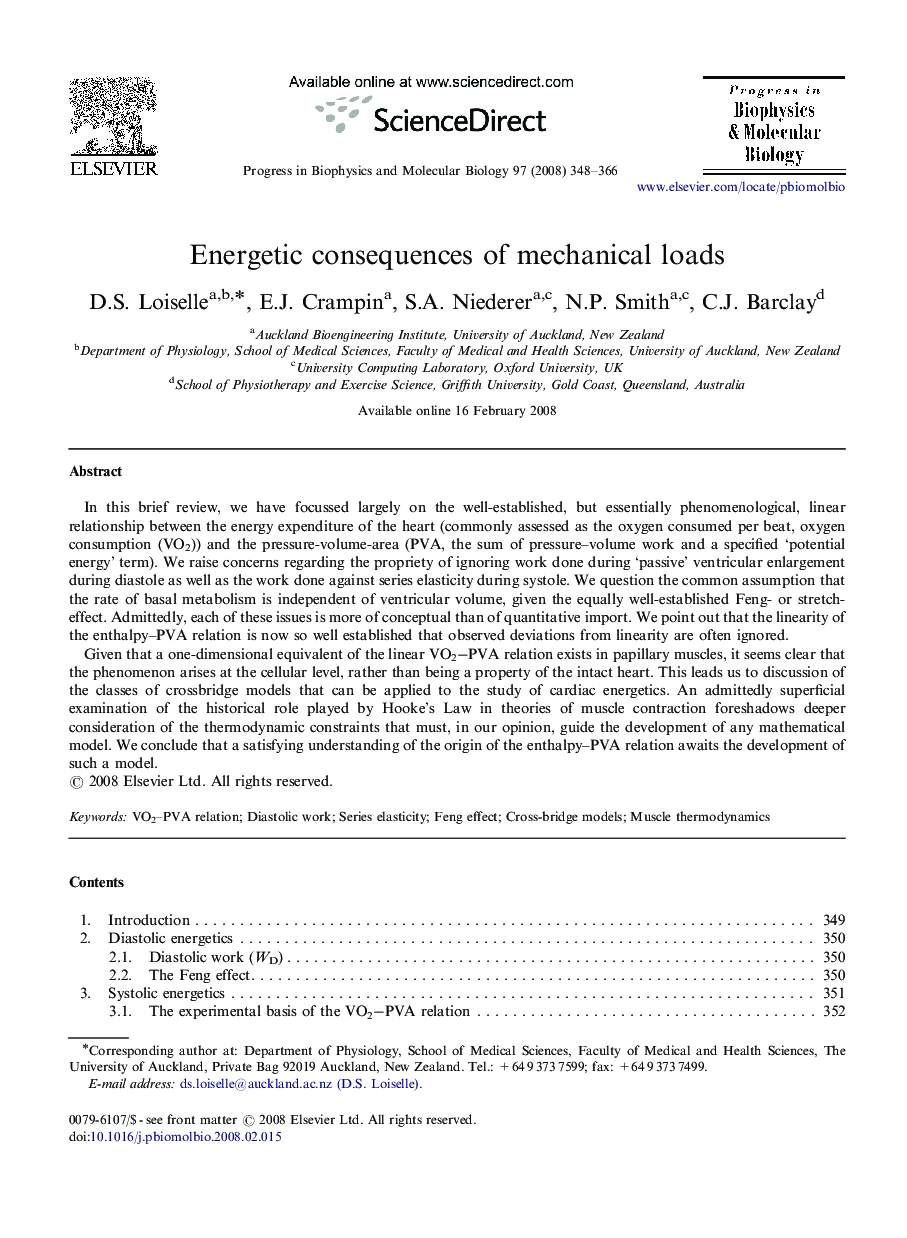| Article ID | Journal | Published Year | Pages | File Type |
|---|---|---|---|---|
| 2070320 | Progress in Biophysics and Molecular Biology | 2008 | 19 Pages |
In this brief review, we have focussed largely on the well-established, but essentially phenomenological, linear relationship between the energy expenditure of the heart (commonly assessed as the oxygen consumed per beat, oxygen consumption (VO2)) and the pressure-volume-area (PVA, the sum of pressure–volume work and a specified ‘potential energy’ term). We raise concerns regarding the propriety of ignoring work done during ‘passive’ ventricular enlargement during diastole as well as the work done against series elasticity during systole. We question the common assumption that the rate of basal metabolism is independent of ventricular volume, given the equally well-established Feng- or stretch-effect. Admittedly, each of these issues is more of conceptual than of quantitative import. We point out that the linearity of the enthalpy–PVA relation is now so well established that observed deviations from linearity are often ignored.Given that a one-dimensional equivalent of the linear VO2−PVA relation exists in papillary muscles, it seems clear that the phenomenon arises at the cellular level, rather than being a property of the intact heart. This leads us to discussion of the classes of crossbridge models that can be applied to the study of cardiac energetics. An admittedly superficial examination of the historical role played by Hooke's Law in theories of muscle contraction foreshadows deeper consideration of the thermodynamic constraints that must, in our opinion, guide the development of any mathematical model. We conclude that a satisfying understanding of the origin of the enthalpy–PVA relation awaits the development of such a model.
